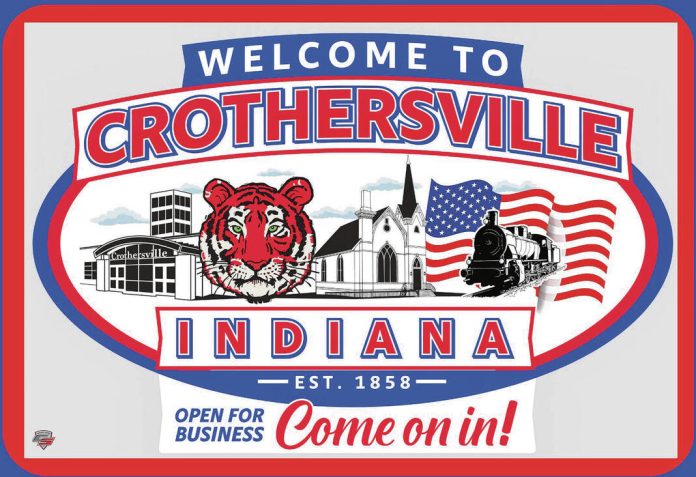
CROTHERSVILLE — Based on tax rates, the Crothersville Redevelopment Commission could have projected revenue of around $8,600 coming in from the tax increment financing district this year.
During a recent commission meeting, Brady Rogers with Reedy Financial Group said he used the 2023 tax rate of 2.1595% to determine that estimate, but the Indiana Department of Local Government Finance just released the 2024 budget, so he can update the tax rate information to see if the number changes.
That money will be collected in 2025 and distributed from the county to the town in 2025.
The commission, however, still owes the town nearly $20,000 that was borrowed to cover the expenditures to establish the redevelopment commission and TIF district until it starts generating money.
Meanwhile, Reedy Financial Group is going to work with the commission on developing an economic development plan laying out what the town plans to use revenue for over the next five years. Rogers said there are limitations on what can be done with the money.
Commission President Jamy Greathouse said projects could include public safety and infrastructure, including water lines and roads.
Also, since the commission funds the school up to 15% of its budget, projects could help in that way.
“The TIF district does heavily affect the school in our area, so that assessed value growth, the school won’t see that in their budget area growth, but we can take and invest in specific projects if we wanted,” Greathouse said.
Commission Secretary Ardell Mitchell said to be impactful in the first five years, it will be important to work in concert with other agencies and opportunities to fund projects. That could include developers, Jackson County Industrial Development Corp. and the town council.
“We can come to the party with a smaller one and we work together, avoiding the debt but still being part of something more impactful, so planning something, allowing that flexibility, welcoming (other entities) … really be impactful with small dollars versus trying to fund something on our own,” he said.
Greathouse also said the commission could provide match money for grants that impact the town, such as the drinking water project underway now that’s going to add a water tower and bigger water mains near the industrial park and result in other improvements.
“That could be issued from the redevelopment commission to pay that match money because of the economical impact, the redevelopment impact of that area,” he said. “Those are also things where we can spend $50,000 or $100,000 for a $1 million grant to go toward a bigger project like that. Those are obviously the low-hanging fruit that we would really like to try to get ahold of to get the biggest bang for the dollar.”
Commission member Dale Schmelzle said in the beginning, money could be used for beautification, like sidewalks and decorative light poles.
“That was the direction that my head is going until we start getting some money,” he said.
Greathouse said the reason to look at a bigger scope is to set some revenue aside for those projects that take multiple years to complete.
“As we begin to build that well up, absolutely 100% we take half of that budget, we throw it into some stuff like that (lower-cost projects) while we save the other half,” he said. “But we need to come up with a plan for that other because those projects, they are long term and require a lot.”
The EDP will include a budget forecast for the commission to know the revenue estimates in the coming years, he said.
“We can look at those plans and say, ‘Hey, we want to take this percent and put it over here because we want to do this in the long term, but we’re going to spend this in the interim,’” Greathouse said.
In 2025, he said the state will require a minimum of a five-year EDP, but he would like to see the commission scope five- and 10-year plans with estimated generated revenue.
“That way, we can start seeing where we would be so we all can put our ideas together on where we’re going to go,” Greathouse said. “We can’t just sit on it, basically. That’s what the state doesn’t want. The state doesn’t want us to have a zombie district and just sit on the money. They want us to have a plan to spend it.”
As 10-year tax abatements issued to companies in the TIF district begin to fall off, Greathouse said the commission will generate more revenue. A tax abatement occurs over a 10-year period in which companies pay 10% more on taxes each consecutive year. Companies do not pay any property taxes on the improvements in the first year.
The town also is working on establishing zoning, and that could be another way to capture additional revenue.
